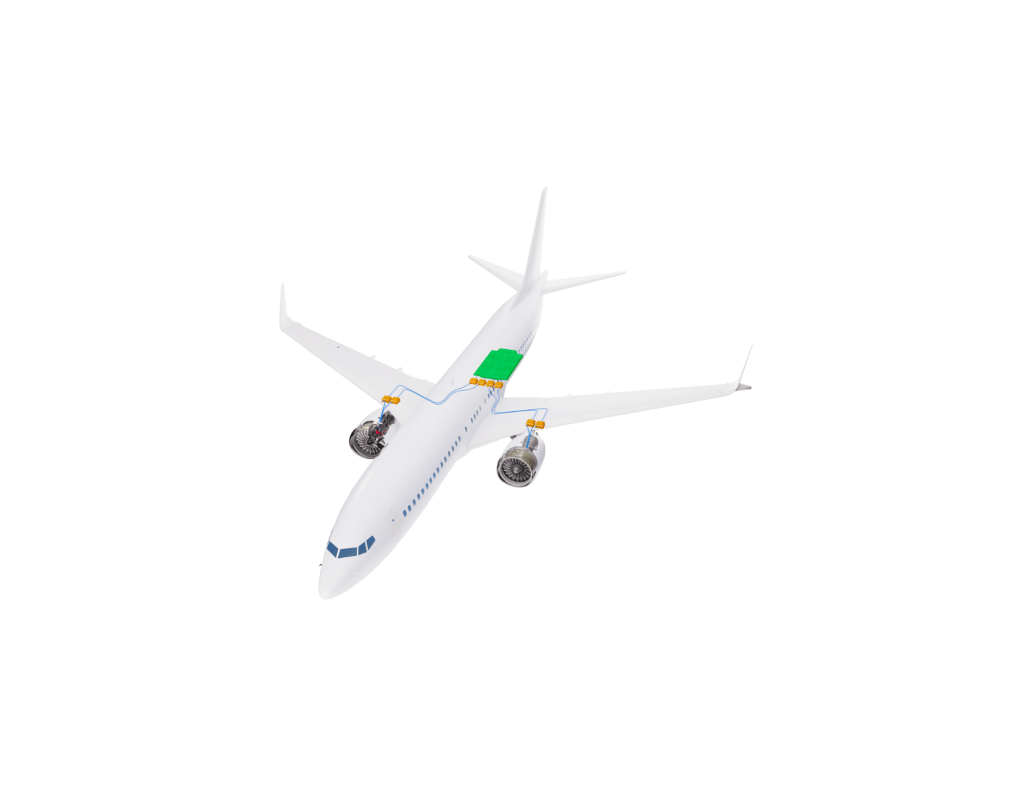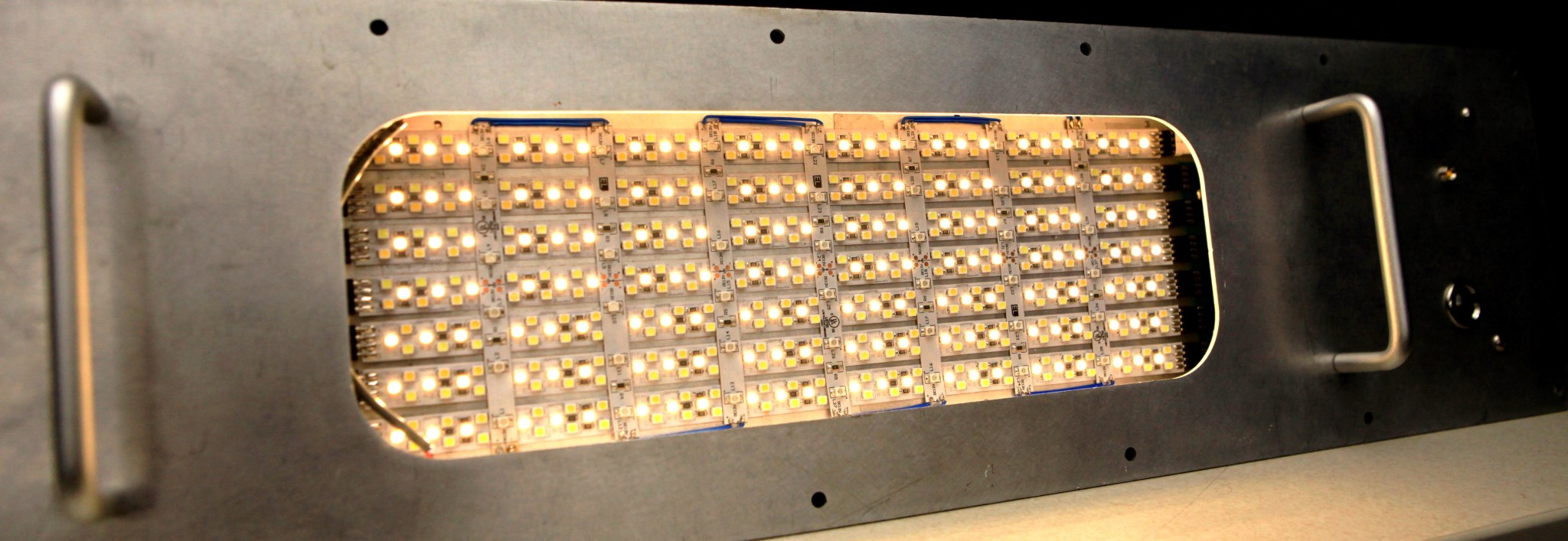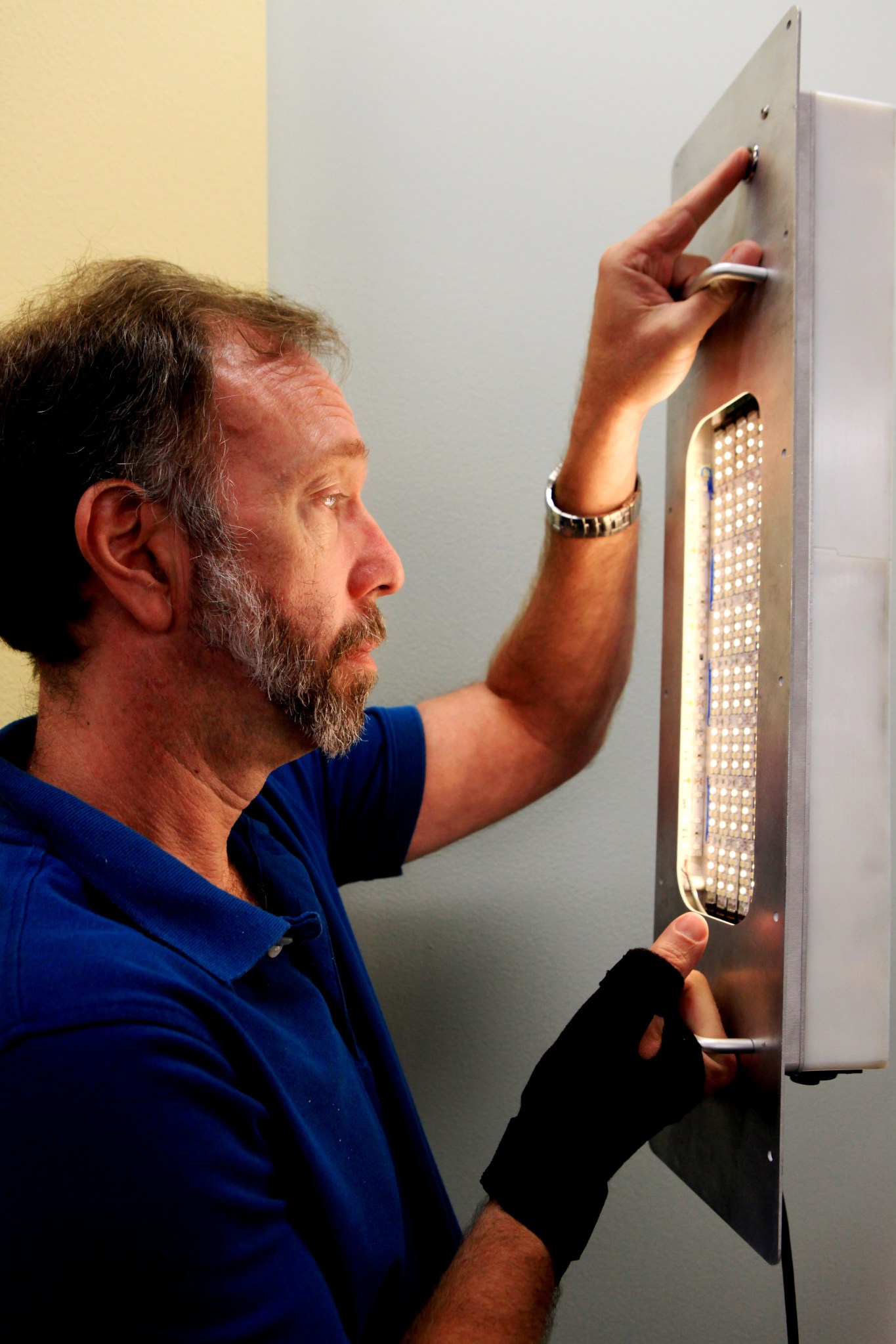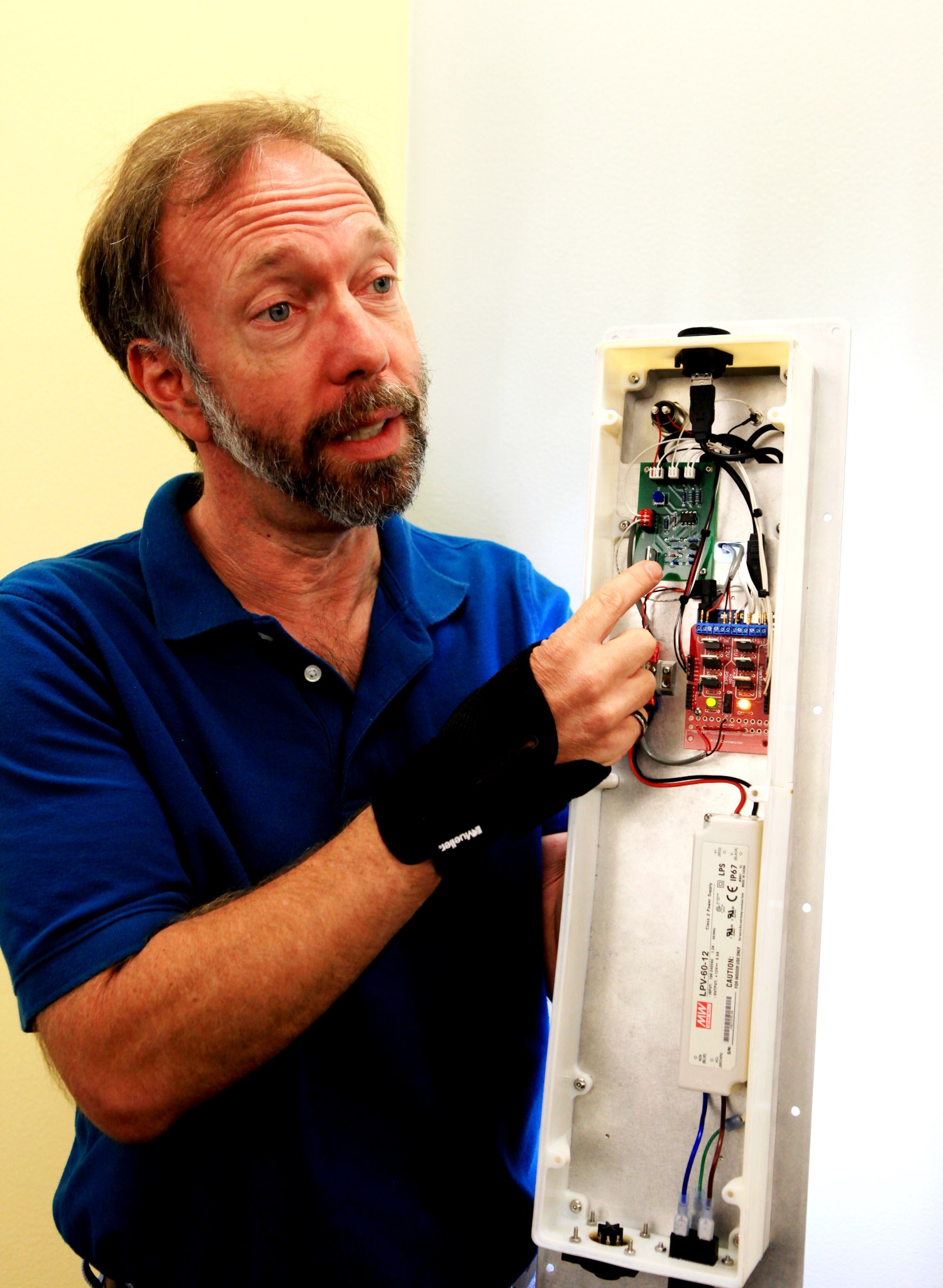By Bob Granath
NASA’s Kennedy Space Center, Florida
NASA’s Kennedy Space Center recently entered into a partnership with Light Visually Transceiving (LVX) System Corp. to collaborate in developing a potentially ground-breaking technology in electronic communications. Similar to high-speed communication known as Wi-Fi, visible light communication, or VLC, is a wireless method using light-emitting diodes (LEDs), referred to as Li-Fi.
Using standard room lighting, VLC transmits data using LEDs to send wireless communications signals. It can be used as a standalone technology or as a supplement to radio-frequency or cellular networks. Ultimately, the innovation has potential applications for use in everything from a local coffee shop to a spacecraft on its way to Mars.
According to principal investigator Eirik Holbert, Ph.D., VLC is a very basic concept.
“The technology simply provides a wireless network using light instead of radio signals and copper wires to transmit data,” he said.
On July 30, 2015, Kennedy Director Bob Cabana signed a Space Act agreement with LVX Board Chairman and CEO John Pederson to license researchers at Kennedy to study and develop new applications for visual light communication.
Space Act Agreements are legal understandings empowering NASA to work with any organization that helps fulfill the agency’s mandate. This effort, coordinated by Center Planning and Development at Kennedy, is a continuation of the center’s transition to a diverse, multi-user spaceport.
NASA and LVX are studying enhancements to lighting system capabilities in hopes of improving the technology and adding features such as Global Positioning Satellite Routing Systems architecture. While the Intentional Space Station already has a Wi-Fi system, Holbert says a Li-Fi network may be a possibility for a spacecraft making the first trip to the Red Planet.
“A future manned spacecraft making a trip to Mars could be a candidate for this kind of communications system,” he said. “Also, a deep-space habitat operating on the surface of the planet could use VLC.”
Deep Space Habitat is a proposed NASA conceptual design to support a crew exploring beyond low-Earth orbit. It would allow astronauts to live and work safely for up to a year or more on missions to near-Earth asteroids, the vicinity of the moon, or on the surface of Mars.
Innovations such as VLC and Li-Fi are additional ways NASA is investing in the future. The agency continually seeks technology solutions that dramatically improve its capabilities while generating tangible benefits.
Light communication is not new. Its history goes back as far as the 1880s when Alexander Graham Bell, inventor of the telephone, developed the photophone. In a demonstration in Washington, D.C. he transmitted speech using modulated sunlight over a distance of several hundred yards. This experiment even pre-dates the first transmission of speech by radio.
“The possibility of using this technology has been around for a long time,” said Holbert, a research physicist at Kennedy’s Swamp Works. “Until recently, no one considered the advantages worthwhile. Advances in electronics have made this more practical.”
Swamp Works was established at Kennedy to provide rapid, innovative and cost-effective solutions to the challenges posed by NASA’s plans for exploration. The scientists and engineers working there do this by leveraging partnerships across the agency, industry and academia. Concepts start small and build up fast, with lean development processes and a hands-on approach.
Over the past few years, researchers found that a “fiberless” light photon medium has shown that it can provide virtually unlimited data transfer and operate with considerably less energy requirements, thus making it a “green” technology. While Internet transmissions via radio-frequency bandwidths are limited, the visible light spectrum is 10,000 times larger. By comparison, this makes the VLC data capacity almost infinite.
VLC also presents significantly reduced security risks.
“My biggest concern with using Wi-Fi in a restaurant, hotel or on an airplane is the possibly of ‘sharing’ my credit card information,” Holbert said. “Internet traffic transmitted by radio frequency signals are always vulnerable.”
Holbert explains that a building or facility equipped with LED light fixtures could be set up to use VLC technology.
“The prototype light fixtures we’ve developed are primarily made with readily available off-the-shelf hardware,” he said. “We’ve been able to build simple prototype receiver hardware from $5 worth of parts.”
The challenge is finding a way to make the network work in a way that is economically feasible.
It can connect to the actual internet through any usual manner. LEDs in lighting fixtures communicate by flashing or blinking in a manner that is so fast it is undiscernible to the human eye.
To use the LED network, a user simply needs a small receiver/transmitter device to connect to a laptop computer or cellular telephone using a USB (universal serial bus) port.
With LVX now headquartered at Kennedy, the Space Act Agreement will facilitate the work of their researchers and NASA experts, such as Holbert, in developing new lighting technologies and applications for VLC. This will not only focus on the development of Li-Fi for use on future deep-space missions, but include innovations that have the potential to benefit daily life.
During the five-year Space Act Agreement between NASA and LVX, Kennedy will perform reimbursable services to further research and technology development of VLC and lighting system expansion. Working in Kennedy’s Swamp Works, scientists and engineers will provide a final prototype at the conclusion of the agreement consisting of a camera, microphone and speaker technologies.
Holbert explains that VLC does have its limitations. Unlike Wi-Fi, Li-Fi must be used where lighting is available. By using radio frequency signals, Wi-Fi can, for example, penetrate walls.
“Li-Fi will likely never completely replace Wi-Fi,” he said. “But it does have potential. If we can make it worthwhile, it could become a very valuable technology down the road for space travel.”



























